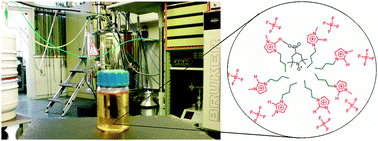The solvation of nitroxide radicals in ionic liquids studied by high-field EPR spectroscopy†
Abstract
Ionic liquids (ILs) feature a variety of properties that make them a unique class of

* Corresponding authors
a
Max Planck Institute for Polymer Research, Ackermannweg 10, 55128 Mainz, Germany
E-mail:
hinderberger@mpip-mainz.mpg.de
Fax: +49 6131 379 100
Tel: +49 6131 379 126
b Max Planck Institute for Medical Research, Jahnstraße 29, 69120 Heidelberg, Germany
Ionic liquids (ILs) feature a variety of properties that make them a unique class of

 Please wait while we load your content...
Something went wrong. Try again?
Please wait while we load your content...
Something went wrong. Try again?
Y. Akdogan, J. Heller, H. Zimmermann and D. Hinderberger, Phys. Chem. Chem. Phys., 2010, 12, 7874 DOI: 10.1039/C001602K
To request permission to reproduce material from this article, please go to the Copyright Clearance Center request page.
If you are an author contributing to an RSC publication, you do not need to request permission provided correct acknowledgement is given.
If you are the author of this article, you do not need to request permission to reproduce figures and diagrams provided correct acknowledgement is given. If you want to reproduce the whole article in a third-party publication (excluding your thesis/dissertation for which permission is not required) please go to the Copyright Clearance Center request page.
Read more about how to correctly acknowledge RSC content.
 Fetching data from CrossRef.
Fetching data from CrossRef.
This may take some time to load.
Loading related content
